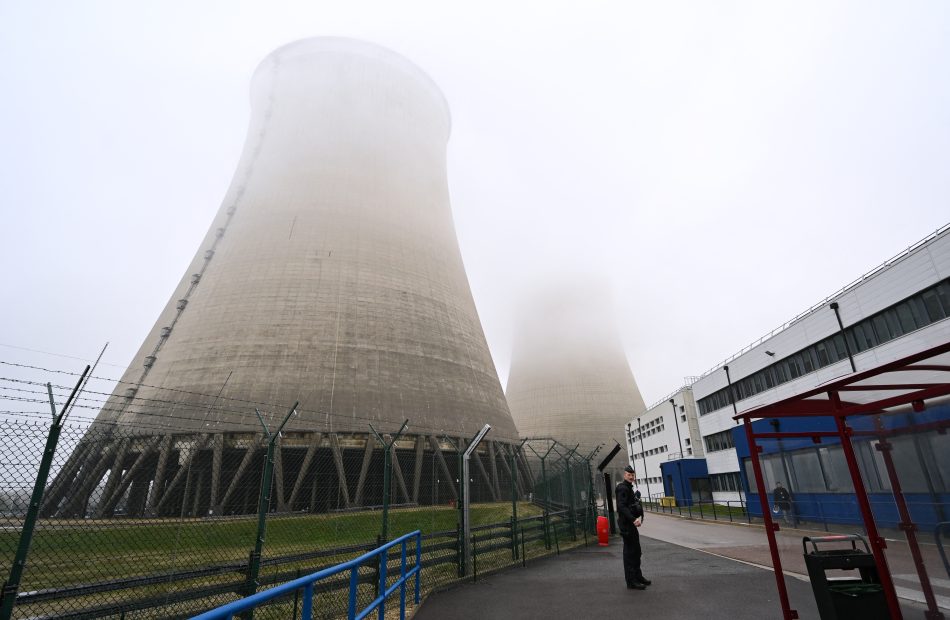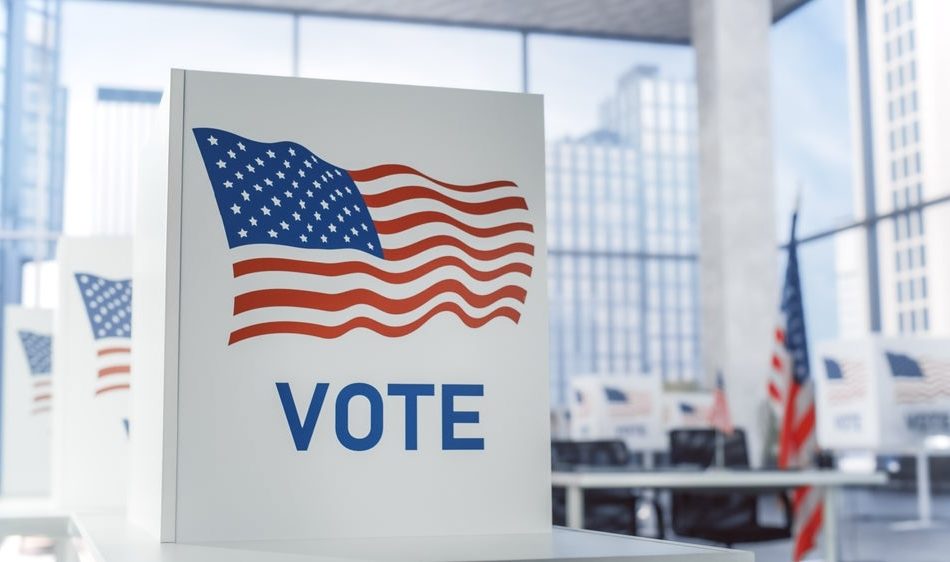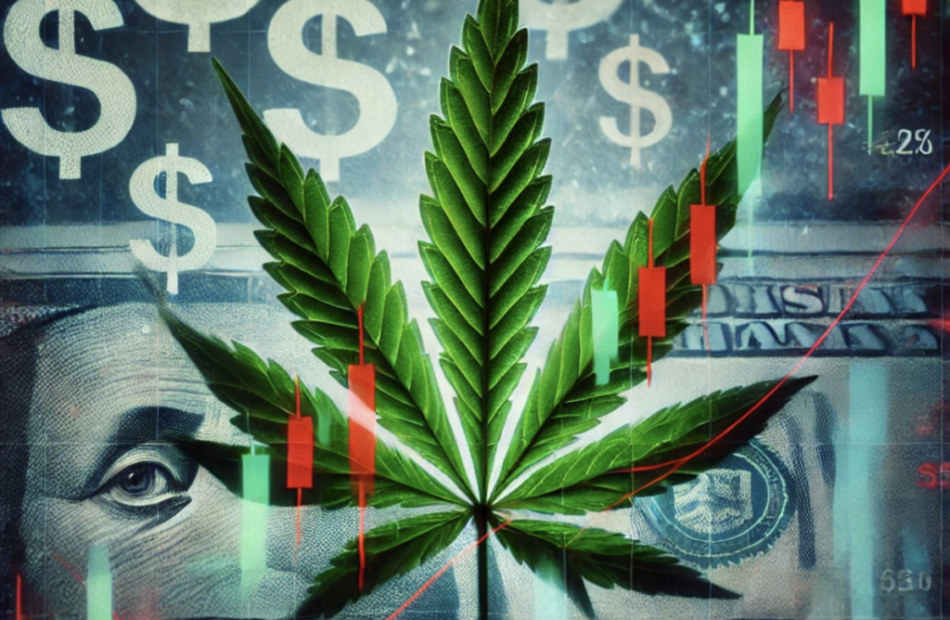YouTube Premium's Legacy Prices Come To An End More Users
In a move affecting users globally, Alphabet Inc. GOOG GOOGL subsidiary Google’s YouTube has announced price increases for its Premium and Music services, impacting legacy subscribers in the U.S. and Europe.
What Happened: This adjustment will see U.S. subscribers with older plans, such as those from Google Play Music or YouTube Red, transitioning to a $13.99 monthly rate in the new year.
European users have also been notified of similar changes, with some receiving a three-month grace period at their current rates, according to a report by The Verge.
Paul Pennington, YouTube’s communications manager, confirmed the price adjustments will affect both new and existing subscribers in countries such as Bulgaria, Costa Rica, and Spain.
Subscribers who initially joined through Google Play with early adopter pricing will receive three extra months at their existing rate.
A Reddit post highlighted a legacy subscriber in Spain, whose monthly fee will rise from 7.99 euros to 10.99 euros, still below the 12.99 euros rate for new individual music subscribers.
See Also: Google Gemini Rolls Out ‘Utilities’ Extension For Android: Here’s What All You Can Do With It
Why It Matters: The price hike comes amidst YouTube’s strategic expansion and revenue growth. In October, YouTube extended its “Premium Lite” plan to more countries, offering a cheaper subscription with fewer ads. This move provides an alternative for users seeking fewer ads without additional perks.
Earlier in May, YouTube introduced the AI-powered “Jump Ahead” feature for Premium users, allowing them to skip commonly skipped sections of videos, enhancing user experience.
Furthermore, YouTube’s financial success was highlighted in October when it reported generating $50 billion in combined advertising and subscription revenue over the past year.
Check out more of Benzinga’s Consumer Tech coverage by following this link.
Read Next:
Disclaimer: This content was partially produced with the help of AI tools and was reviewed and published by Benzinga editors.
Photo courtesy: Shutterstock
Market News and Data brought to you by Benzinga APIs
© 2024 Benzinga.com. Benzinga does not provide investment advice. All rights reserved.
New Report Finds Striking Similarities Between Today's Housing Market And 2007 – Is Another Crash Around The Corner?
Recent analyses suggest today’s U.S. housing market holds similarities to 2007’s precrash conditions but key differences reveal it’s not just history repeating itself. Housing prices have surged in major cities due to tight inventory, land scarcity and rising construction costs but not risky lending practices.
In states like Idaho, single-family home prices jumped by 19%, fueled by pandemic-era relocations and increased demand. The National Association of homebuilders (NAHB) notes this isn’t a case of overborrowing but of market forces like material costs and a severe shortage of affordable homes.
Don’t Miss:
Interest rates, too, present a major shift. While the 2007 crisis was partly triggered by historically low rates encouraging risky borrowing, today’s rates have reached multi-decade highs, averaging around 7%. High rates, intended to counteract inflation, have put a damper on demand, making mortgages pricier and keeping some potential buyers on the sidelines.
Unlike in 2007, where rates eventually led to a domino effect of defaults and price declines, today’s price reductions are minimal. Buyers are either priced out or waiting out hoping for rates to ease, with affordability at its lowest point in recent memory.
Trending: During market downturns, investors are learning that unlike equities, these high-yield real estate notes that pay 7.5% – 9% are protected by resilient assets, buffering against losses.
Strict lending standards also set today’s market apart from 2007’s. Fewer subprime loans are in play and most buyers are high-quality borrowers with safer, more traditional mortgages. According to Mark Zandi, chief economist at Moody’s Analytics, the current market foundation is “far more solid” than it was back then.
The speculative practices and unqualified loans that fueled the last housing bubble are missing today, keeping the housing market stable despite higher prices and inventory challenges. The inventory shortage further distinguishes today’s market. Inventory levels have plummeted nearly 60% since early 2020, a stark contrast to 2007’s oversupply contributing to plunging prices.
Homes are so scarce in metropolitan areas that prices have increased even further. This supply strain isn’t easily fixed and while it props up home values it exacerbates affordability problems, particularly for renters spending more on housing costs than ever.
On the flip side, some signs echo 2007. The National Association of Realtors reported that in 2024 new homes made up about 13% of sales, with pre-owned homes at 87% – numbers nearly identical to the 2007 breakdown.
Trending: Commercial real estate has historically outperformed the stock market, and this platform allows individuals to invest in commercial real estate with as little as $5,000 offering a 12% target yield with a bonus 1% return boost today!
However, experts urge caution before drawing too many parallels. Alex Beene, a financial literacy instructor at the University of Tennessee at Martin, told Newsweek that today’s housing market isn’t simply teetering on the same edge as 2007.
“Before anyone raises the red flag, it’s important to note that getting a mortgage is far more comprehensive now. Today’s market is shaped more by high rates and prices than by unchecked borrowing,” he argued.
Builders, in particular, are taking steps to attract buyers with aggressive incentives. As reported by Newsweek, Ian Chang, a title and escrow expert, noted that some builders have sweetened the deal with rate buy-downs and home upgrades to offset high rates and lure buyers.
“Some buyers have seen new builds as attractive due to the promotions that builders have put in place,” said Chang. With traditional home sellers clinging to their low mortgage rates, new builds with incentives are taking a larger slice of the market share.
Read Next:
Market News and Data brought to you by Benzinga APIs
© 2024 Benzinga.com. Benzinga does not provide investment advice. All rights reserved.
What’s next for nuclear stocks after regulatory pushback?
Nuclear energy stocks have become a favorite of Wall Street this year as the artificial intelligence boom spreads and Big Tech searches for ways to meet its growing power demand.
They helped power the S&P 500’s Utilities index (XLU) to all-time highs — the index is on track to outperform the S&P 500’s equal-weighted counterpart (^SPXEW) in 7 of the past 10 months, according to data compiled by Bloomberg. And Vistra (VST), a nuclear power company, recently surpassed Nvidia (NVDA) as the biggest gainer in the S&P 500 (^GSPC) year to date.
Big Tech firms, including Amazon (AMZN), Microsoft (MSFT), and Google (GOOG), drove the gains, announcing hundreds of millions of dollars in investments in nuclear power names over the course of several weeks.
It’s a story the market ran with. Then came a regulatory wrist slap that briefly stopped the nuclear energy rally in its tracks.
In a 2-to-1 ruling on Nov. 1, the Federal Energy Regulatory Commission (FERC) rejected a request from Talen Energy (TLN) to increase the power it could provide Amazon from its Susquehanna power plant, citing concerns about grid reliability and energy affordability.
Several nuclear energy stocks, including Talen, Oklo (OKLO), Centrus Energy (LEU), Vistra (VST), and NuScale Power (SMR), tumbled the following Monday.
Amazon is expected to petition the decision, according to CFRA analyst Daniel Rich. But for investors, “it certainly is a setback,” Rich said.
Rich explained that co-location agreements have become a major focus for the tech industry, as they allow hyperscalers to buy power directly from an existing energy source for their data centers. This enables them to build more data centers at speed and at lower costs.
But these agreements may be a sticking point for regulators, which is why Big Tech has pursued other strategies, such as creating new sources of nuclear energy through small modular reactors (SMRs).
Though there are currently no SMRs in the United States, companies like Amazon see them as a way to affordably add to the power grid while also meeting the increased energy demands AI requires.
“The order may not represent a long-term risk,” ClearView Energy Partners managing director Timothy Fox told Yahoo Finance. “It’s more that FERC may have punted or didn’t want to set a precedent about co-location until it had firm policy.”
Clay Sell, the CEO of nuclear reactor designer X-energy, told Yahoo Finance that “a significant portion of the increased electricity demand in the US for the next 25 years is going to come from AI.”
Robinhood CEO Says Rising Interest In Election Prediction Markets Is Indicative Of Growing 'Distrust Of Traditional News'
Robinhood Markets HOOD new election prediction market is reshaping how people consume information, with CEO Vlad Tenev saying it could redefine how users get real-time news.
What Happened: Robinhood’s prediction market was unveiled a week before the election, spotlighting the race between Democratic nominee Kamala Harris and now President-elect Donald Trump.
The platform’s CEO, Vlad Tenev, now envisions a future where Robinhood’s millions of users can place bets on a range of events, including the performance of stocks they trade on the platform, reported The Verge.
In an interview with the publication, Tenev suggested that the burgeoning interest in prediction markets is indicative of a growing “distrust of traditional news” and a shift in the way people seek information.
See Also: What Does Trump’s Victory Mean For EV Giant Tesla And The Big 3 Automakers?
He stated, “It’s the fastest way to get information about what’s happening,” adding that prediction markets delivered clear results hours before news networks announced the election.
The CEO also touched upon the legalization of election betting in the U.S., which he believes presents a “once-in-a-lifetime opportunity to create a new innovative product and offer it to customers.”
He is optimistic about the future of prediction markets and sees Robinhood leaning into them more.
Tenev also shared his thoughts on the potential of prediction markets in financial markets, sports betting, and beyond. He believes these markets could offer a more accurate method of hedging risk or speculating on company performance.
Why It Matters: Robinhood’s prediction market has seen significant activity since its launch. The platform’s election contracts surpassed 200 million trades on Election Day itself.
This rapid growth continued, with Robinhood witnessing a record overnight trading volume, with 400 million 2024 election contracts traded.
Last month, Robinhood Markets posted quarterly earnings of 17 cents per share, aligning with analyst expectations.
Revenue for the quarter reached $637 million, slightly below the forecasted $650.67 million but marking a 36.4% increase from $467 million in the same quarter last year.
Price Action: Block’s shares closed Friday up 4.02% at $30.54. In after-hours trading, the stock saw further gains, reaching $30.60 as of this writing, according to Benzinga Pro
Read Next:
Disclaimer: This content was partially produced with the help of Benzinga Neuro and was reviewed and published by Benzinga editors.
Photo courtesy: Shutterstock
Market News and Data brought to you by Benzinga APIs
© 2024 Benzinga.com. Benzinga does not provide investment advice. All rights reserved.
Do the Prospects for Dividend Favorite Realty Income Look Strong, or Is Trouble Brewing?
Realty Income (NYSE: O) has long been a favorite of income-oriented investors given its monthly dividend payment, robust yield, and history of increasing its dividend. Meanwhile, the real estate investment trust (REIT) has delivered steady, consistent results over the years.
However, with a number of its tenants facing pressure and closing stores, the question becomes, is trouble brewing?
Start Your Mornings Smarter! Wake up with Breakfast news in your inbox every market day. Sign Up For Free »
Let’s take a closer look at Realty Income’s most recent quarterly report, the safety of its dividend, and how the REIT plans to deal with a number of struggling tenants.
Realty Income turned in another steady quarter, although investor attention was certainly focused on what is going on with its pharmacy, convenience store, and dollar store customers. All three concepts have been under pressure, with companies experiencing credit pressures and closing stores.
Realty Income management pointed to tenants that have recently gone through bankruptcy and how it has been able to get high recapture rates. Regarding Red Lobster restaurants, it said that it had 216 assets of which nine were rejected in bankruptcy court, with it getting a 91% recapture rate. It said that with Rite Aid, which has recently emerged from bankruptcy, it was able to get an 88% recapture rate.
Addressing Walgreens and its store closures, Realty Income said it has had 13 renewals come up this year, and that all were renewed, with a 100% recapture rate. Meanwhile, management noted the REIT has historically had over 100% recapture rates for lease renewals with CVS, Dollar Tree, and Family Dollar.
At the end of the quarter, Dollar General and Walgreens each accounted for 3.3% of its total annualized rent, while Dollar Tree/Family Dollar was 3.1% and CVS was 1.2%.
Meanwhile, Realty Income said it was looking to create a private capital fund to help it take advantage of the opportunities it is seeing across various verticals, including retail, industrial, data centers, and gaming. It said the fund would provide long-term stable capital while also providing it with recurring management fees.
Turning to the REIT’s third-quarter results, its revenue climbed 28% to $1.33 billion as new properties acquired through its acquisition of Spirit Realty in January and new investments bolstered results. Same-store rental revenue increased 0.2% in the quarter, while its occupancy rate was 98.7%. It said it had 170 lease renewals in the quarter with a 105% recapture rate.
Apple Bridges iOS-Android Messaging Gap: RCS Reactions Finally Displayed Correctly On iPhones
Apple Inc. AAPL has updated its messaging system to accurately display Android user reactions on iOS, marking a major step forward in iPhone–Android messaging.
What Happened: Apple has addressed the long-standing issue of Android, the operating system by Alphabet Inc.’s GOOG GOOGL Google, reactions appearing as separate lines on iOS.
Now, when an Android user reacts to an RCS message from an iOS user, the chosen emoji will be displayed in line with the message bubble.
Tests conducted by The Verge using iPhones running iOS 18.1 and various Android phones confirmed that both devices now display reactions as intended.
However, it remains unclear when this change was implemented and whether Google or Apple made the necessary adjustments.
Subscribe to the Benzinga Tech Trends newsletter to get all the latest tech developments delivered to your inbox.
Why It Matters: When RCS was initially launched on iOS in September, Android user reactions were still not being displayed correctly on iPhones, despite functioning properly in the reverse scenario.
The iMessage blue vs. green bubble debate underscores the contrasting messaging experience between iPhone users (blue bubbles) and Android users (green bubbles) when they communicate.
Over time, this difference has fueled social stigma, technical limitations, and even legal scrutiny of Apple’s practices.
Previously, when a user told Apple CEO Tim Cook that his mother couldn’t view videos he sent due to compatibility issues, Cook had a straightforward response: “Buy your mom an iPhone.”
Apple’s upgrade to RCS messaging support marks a surprising shift after years of resisting Google’s push for RCS adoption. Facing mounting pressure from China and the EU, Apple finally introduced basic RCS support in iOS 18.
Within the Messages app, Apple officially supports the basic RCS standard known as the RCS Universal Profile.
Emoji reaction support is part of RCS version 2.7, which should also include the ability to edit a sent message, although this feature could not be activated on iOS.
Check out more of Benzinga’s Consumer Tech coverage by following this link.
Read Next:
Disclaimer: This content was partially produced with the help of Benzinga Neuro and was reviewed and published by Benzinga editors.
Photo courtesy: Shutterstock
Market News and Data brought to you by Benzinga APIs
© 2024 Benzinga.com. Benzinga does not provide investment advice. All rights reserved.
Cannabis Stocks Plunged After Florida Legalization Failed: Rational Reaction Or Market Overreach?
The cannabis market is facing heightened volatility post-election as investor concerns mount over political uncertainty and the fallout from Florida’s failed legalization vote, leading to significant selloffs in top U.S. and Canadian cannabis stocks. Adult-use legalization was also rejected in North Dakota and South Dakota.
Given this setup, investors might be asking: was the post-elections selloff an overreaction or a rational market adjustment?
Experts analysts from Viridian Capital Advisors weighed in on the debate.
Market Meltdown: Was The Sell-Off Justified?
In the wake of Florida’s failed ballot vote for adult-use cannabis, the market cap of 31 publicly traded cannabis companies fell by $2.6 billion from Friday, November 1 to Wednesday, November 6.
Florida’s medical cannabis market alone is projected to reach $2.1 billion in sales by 2024.
If adult-use legalization had passed, it could have effectively doubled sales, adding another $2.1 billion.
Applying a conservative 30% EBITDA margin to these potential sales would yield an EBITDA loss of $630 million.
Using a 5x multiple, also considered conservative, the projected decline in market cap would be around $3.15 billion — suggesting that the $2.6 billion markdown might not have been as exaggerated as it seems.
However, there’s a caveat: not all companies on the list have operations in Florida, though 81% of the market cap is held by firms actively operating there.
A greater concern is the broader impact on the industry’s growth narrative.
Read Also: Cannabis Reform Stumbles In 2024 Elections: A State-By-State Breakdown As Stocks Take A Hit
Some Earnings Added Pessimism
For Viridian Capital Advisors, in addition to the disappointing ballot results, earnings reports from major players including Trulieve TCNNF, TerrAscend TRSSF, Curaleaf CURLF, Cannabist CBSTF and GTI GTBIF have compounded concerns.
The results revealed significant misses, even against lowered expectations.
Aggregate revenues for these companies are projected to be down 0.4% year-over-year and 1.1% sequentially. The decline in EBITDA is 2.2% year-over-year and 4.2% sequentially.
The failed vote has undeniably stretched the industry’s growth timeline, leaving investors to weigh potential catalysts against a stark present reality.
Cover: AI generated image
Market News and Data brought to you by Benzinga APIs
© 2024 Benzinga.com. Benzinga does not provide investment advice. All rights reserved.
Cannabis is evolving – don’t get left behind!
Curious about what’s next for the industry and how to leverage California’s unique market?
Join top executives, policymakers, and investors at the Benzinga Cannabis Market Spotlight in Anaheim, CA, at the House of Blues on November 12. Dive deep into the latest strategies, investment trends, and brand insights that are shaping the future of cannabis!
Get your tickets now to secure your spot and avoid last-minute price hikes.
3 Dividend Growth Stocks That Are Screaming Buys in November
The utility sector isn’t exactly known for growth, but that doesn’t mean you can’t find it if you are willing to look. And dividend growth is exactly what you’ll get from Brookfield Renewable (NYSE: BEP)(NYSE: BEPC), NextEra Energy (NYSE: NEE), and American Water Works (NYSE: AWK).
These three stocks represent three very different companies that get lumped in with the normally slow-growing utility sector. Here’s why you might want to buy these dividend growth stocks as November gets underway.
Start Your Mornings Smarter! Wake up with Breakfast news in your inbox every market day. Sign Up For Free »
Of the three stocks here, Brookfield Renewable is going to have the widest dividend appeal. That’s because the partnership share class (BEP) has a lofty 5.6% yield. The corporate share class (BEPC), which represents the same entity in every way, has a dividend yield of 4.7%, a function of the higher demand for the corporate shares that trade under a different (less complicated) tax structure.
Those yield figures are augmented by the fact that the distribution (or dividend, depending on the share class you are looking at) has grown by a 6% annualized rate since 2001. Looking forward, the goal is growth between 5% and 9% a year.
That’s a very attractive combination of growth and income. But the real story is Brookfield’s focus on renewable energy, which is expected to see increased demand for years into the future. That outlook is backed by the world’s shift from carbon-based energy to cleaner energy sources like solar and wind.
Brookfield is a one-stop shop in the renewable space, with hydroelectric, solar, wind, and storage assets spread across a portfolio with a global reach. If you like dividend growth and you like big yields, this is the opportunity to consider first.
If you aren’t quite ready to go all in on clean energy, don’t worry, you don’t have to. You can buy a utility like NextEra Energy that offers a mix of traditional regulated utility assets and clean energy.
That’s what backs this company’s 2.6% yield and huge 10% annualized dividend growth rate over the past decade. That growth rate isn’t a fluke; management is targeting 10% dividend growth through at least 2026.
The clean energy side of the business is the growth engine, as the company continues to invest in solar and wind power. Just like Brookfield Renewable, NextEra Energy appears to be in the early innings of a long growth game.








